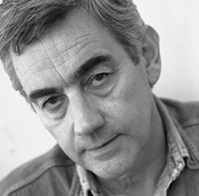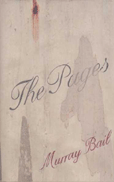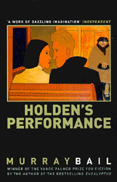Murray Bail – August 4 2019
 Murray is an acclaimed writer of novels, short stories and non-fiction best known for his internationally best-selling novel Eucalyptus. He has lived most of his life in Australia except for sojourns in India (1968-1970) and England and Europe (1970-1974). Trustee of the National Gallery of Australia from 1976 to 1981, Murray’s non-fiction works include a book on Australian artist, Ian Fairweather. Fred Williams’ portrait of Murray, done while they were both Council members of the National Gallery of Australia, is hung in the National Portrait Gallery in Canberra. Murray’s other works include the novels Homesickness and The Voyage as well as the short story collections Contemporary Portraits and Other Stories (republished as The Drover’s Wife and Other Stories) and Camouflage: stories.
Murray is an acclaimed writer of novels, short stories and non-fiction best known for his internationally best-selling novel Eucalyptus. He has lived most of his life in Australia except for sojourns in India (1968-1970) and England and Europe (1970-1974). Trustee of the National Gallery of Australia from 1976 to 1981, Murray’s non-fiction works include a book on Australian artist, Ian Fairweather. Fred Williams’ portrait of Murray, done while they were both Council members of the National Gallery of Australia, is hung in the National Portrait Gallery in Canberra. Murray’s other works include the novels Homesickness and The Voyage as well as the short story collections Contemporary Portraits and Other Stories (republished as The Drover’s Wife and Other Stories) and Camouflage: stories.

The Pages
Text Publishing, 2008; ISBN 9781921351464
What are the pages? On a family sheep station in western New South Wales, a brother and sister work the property while their reclusive brother, Wesley Antill, spends years toiling away in one of the sheds, writing his philosophy. Now he has died. Erica, a philosopher, is sent from Sydney to appraise his life’s work. Accompanying her is psychoanalyst Sophie, who needs distracting from a string of failed relationships. Wesley’s pages lie untouched in the shed. What will they reveal? Was he a genius? These turn out to be only a couple of the questions in the air. How will the visit change the lives of Erica and Sophie? The Pages is a beguiling meditation on friendship and love, on men and women, on landscape and the difficulties of thought itself.

Holden’s Performance
Faber and Faber, 1987; ISBN 9780571148264
Holden’s Performance is the sprawling tale of Holden Shadbolt, a guileless and matter-of-fact man, as he passes through the cities and landscapes of Australia. He follows the flamboyant people around him – ex-Corporal Frank ‘Bloodnut’ McBee who woos Holden’s mother; his uncle, Vern, a shortsighted proofreader with a weakness for eating newspaper with his breakfast cereal; and the crippled artist Harriet, whose twists and curves intersect Holden’s own unswervingly straight lines.
